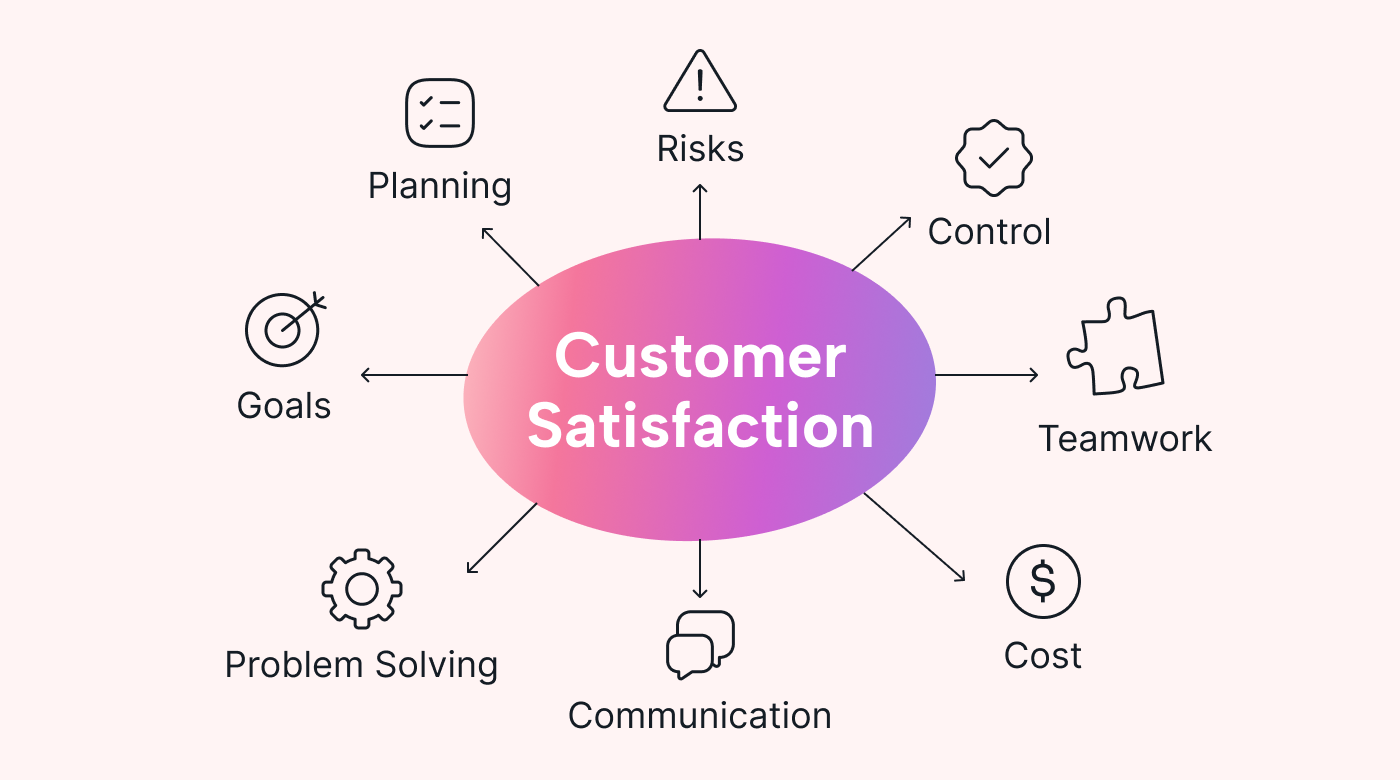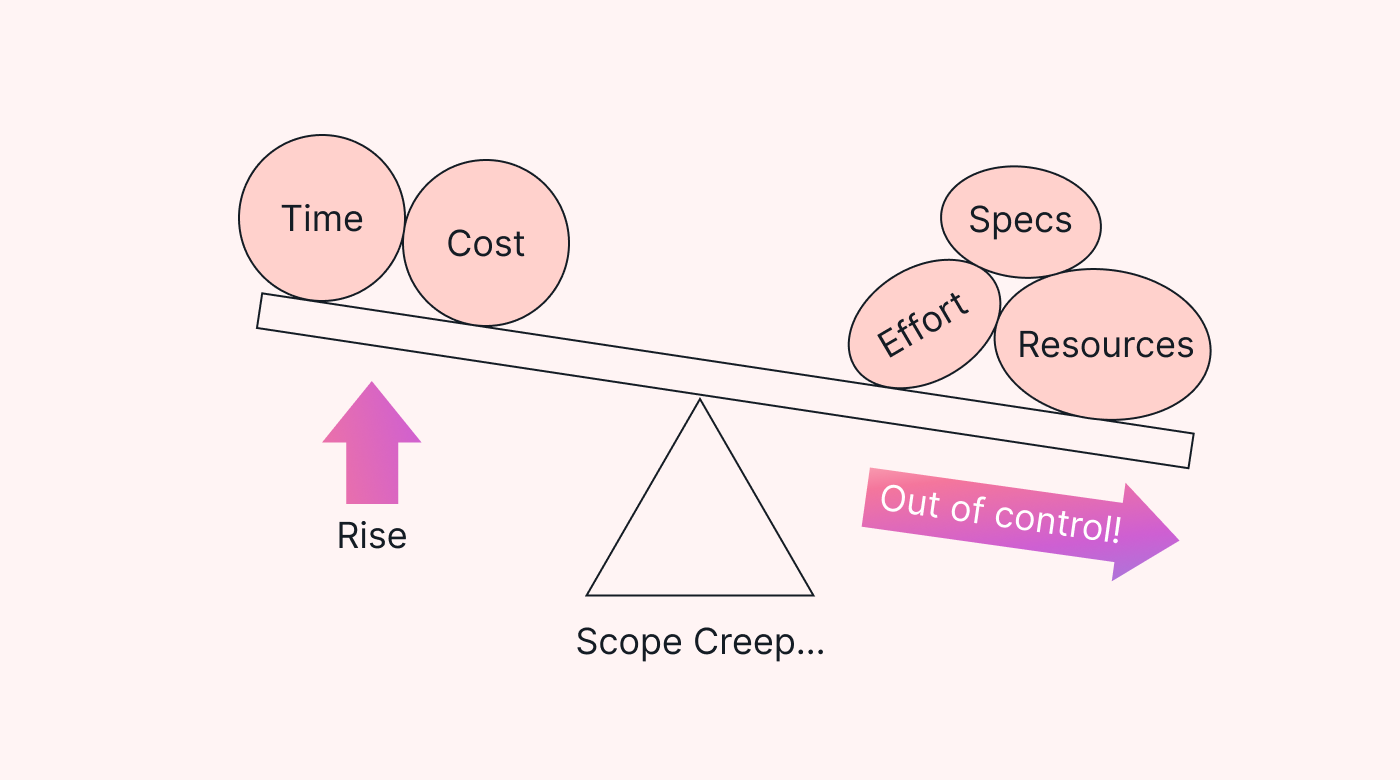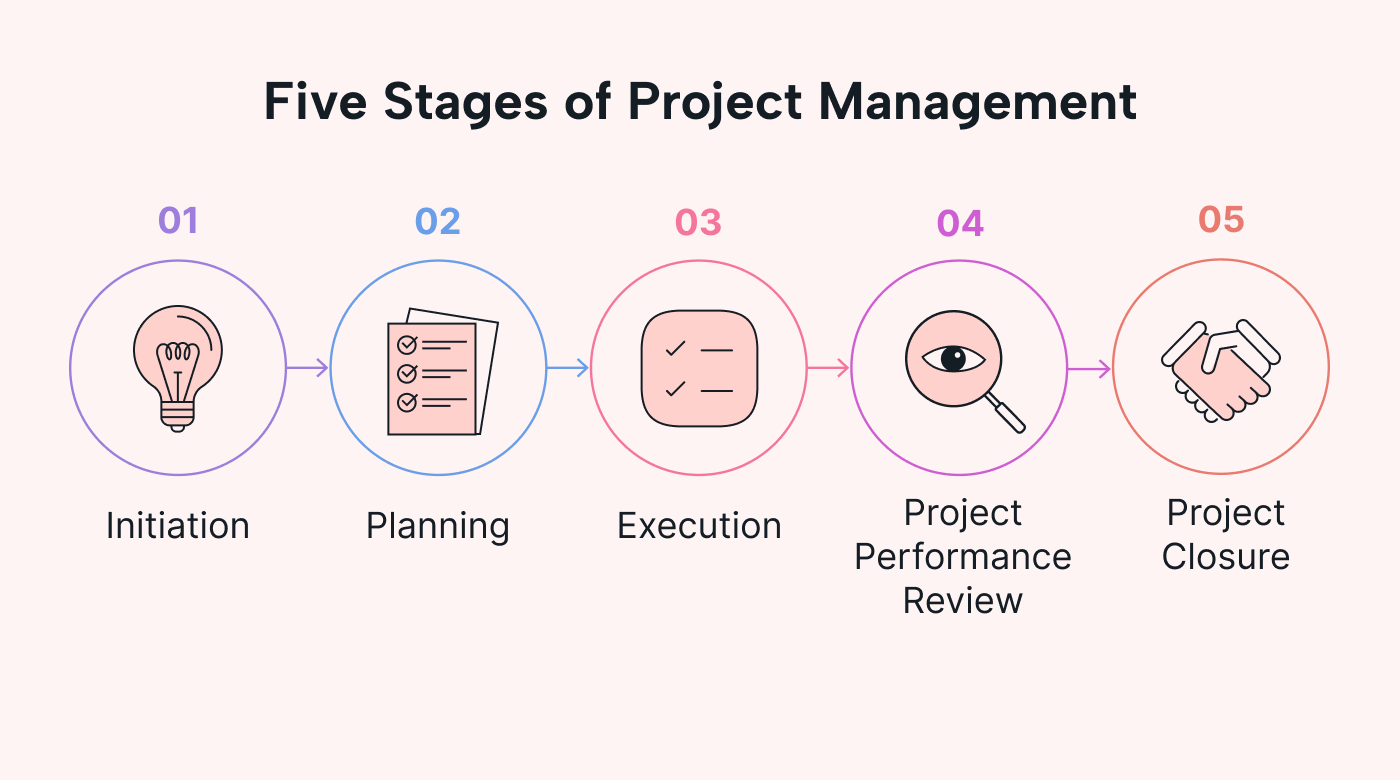Everyone practices project management (even if you don't realize it).
For example, vacation involves planning, budgeting, and scheduling activities. That's managing a project.
The stakes are higher when managing projects for a business. Every project a company undertakes is often an opportunity for growth. Failed projects cost the business time and money.
According to a recent survey, at least 35% of projects businesses undertook over a 12-month period failed, resulting in budget losses. The repercussions of failed projects seem bearable when handling only one project. But businesses can't afford to fail when handling multiple projects.
Small businesses should establish effective strategies for managing their projects to ensure they deliver their projects on time and within budget.
In this article, we'll cover:
- What it means to manage projects (and the benefits).
- Common challenges of managing projects.
- Tips for managing projects.
What does it mean to manage projects?
To appreciate what it takes to manage projects, we must first understand what project management entails.
At a basic level, project management involves applying processes and methods to complete project activities. Completing these activities leads to achieving the desired outcomes.
Businesses may use one method with all their projects. Conversely, businesses may use different project management methodologies depending on a project's context. Examples include Agile, Lean, and Waterfall.
Managing a project requires the input of project stakeholders. Stakeholders include the project sponsor, project manager, development team, and others. The stakeholders can differ from one project to another. The composition may also change when managing multiple projects.
Why is project management important?
Businesses stand to gain a lot from the basics of project management. For example, having a positive ROI from a project is good for your business goals (and bottom line).
Another benefit is meeting (or, better, exceeding) customer expectations. Though this may lack short-term monetary gains, it'll benefit your business long-term.
 |
Let's dive deeper into these and other benefits of successful project management.
Improved use of resources
Project budget planning and resource allocation are essential stages when implementing a project. The goal is to know how much the project will cost. The budget should account for all expenses, including human resources.
Project management also allows effective resource allocation and tracking. It involves pairing resources with specific tasks and activities.
Improved efficiency and output quality
Another important aspect of project management is quality control. Project managers use various techniques to do so.
For example, agile project management methodologies have regular progress reviews called sprint reviews. The project team, customers, and key project stakeholders meet to review the sprint output and project performance.
Risk management
As the adage goes, risk management is how adults manage projects.
A good project management practice should include risk management.
Risk management is a framework for identifying (during the project planning phase), monitoring, and addressing project risks. Project managers use a risk register to keep track of risks.
The risk management process is a living (ongoing) process. This allows the project team to effectively respond to risks as they come up.
Clear communication and collaboration
Effective collaboration will make (or break) a project.
You should clearly spell out the communication channels for vertical and horizontal information sharing.
Online project management software like Motion provides a real-time platform for communication among team members. For example, project managers can use it to update team members on schedule changes and encourage in-app collaboration around documents like the project charter (more on that below).
Happy customers
Happy customers equate to a healthy bottom line.
One way to keep your customers happy is by delivering their expected project outcomes (on time or earlier).
For example, you can't deliver wedding invitation cards one month after the due date. A good project management process should also include a feedback loop. This allows the project team to incorporate customer or end-user feedback into the project work breakdown structure.
Competitive edge
Businesses can exploit the successful completion of projects to edge out their competitors.
For example, effective resource use keeps your business in the green. This allows you to undertake more projects in the future. Timely project deliveries keep your customer satisfied, growing your brand over time.
6 common challenges when managing projects
Managing a project isn't easy, let alone managing several projects simultaneously. This explains why at least one in three projects face time and budget problems. Let's review some of the challenges below.
Lack of transparency and clear communication
The lack of effective communication can sink a project.
For example, team members may not know to whom they answer or report. Conversely, poor communication can also mean project managers don't update their team and stakeholders on time. This can wear out stakeholder support.
Unclear goals
Unclear project goals usually translate into poor project outcomes.
Project objectives must align with organizational goals. Businesses must also communicate the goals to team members and stakeholders.
 |
Unclear goals also complicate project progress tracking.
Scope creep
Many small businesses fail to complete their projects on time because of scope creep. This happens when you fail to define a project's scope (boundaries).
Suppose you are developing software to manage inventory for a local store. If the customer asked for a point-of-sale feature that wasn't included in the initial scope of work, it'd need to go through a change process and likely need more time and money to complete.
Budget shortages
Small businesses can easily run out of money before completing their projects.
Reasons include the misallocation of resources, poor time management or inaccurate estimates.
Ineffective project risk management
It can be an expensive mistake to treat project risk management as a one-time event.
Failing to keep on top of risks and update the risk register can leave businesses flat-footed should the risks occur.
Lack of stakeholder buy-in
Don't overlook stakeholder buy-in. It can influence resource allocation, decision-making, and project outcomes.
For example, project sponsors are unlikely to commit many resources to projects they don't believe in.
Top-level managers may also bring a lot of bureaucracy into the project lifecycle, which can grind a project to a crawl.
5 stages of project management
 |
According to PMI's PMBOK guide, project management has five stages (or phases).
Stage 1: Initiation
The initiation stage involves changing project ideas into achievable goals and what the project will involve.
A company may create a project charter during this phase, which is a broad definition of the project and includes:
- Project scope
- Project goals
- Key stakeholders
- Expected delivery date
- Budget estimates
Project teams use several methods to refine project goals and objectives. The goals should be SMART, CLEAR, and OKR.
The acronym SMART means the goals should be:
- Specific
- Measurable
- Attainable
- Realistic
- Timely
The acronym CLEAR stands for:
- Collaborative
- Limited
- Emotional
- Appreciable
- Refinable
The acronym OKR stands for:
- Objectives
- Key results
It's also at this stage that a business can appoint a project manager. The project manager would then form the project team.
Stage 2: Planning
Project planning is one of the most critical project management stages.
An essential step during project planning is creating a project roadmap. The roadmap is a combination high-level plan and schedule that outlines the project delivery approach, milestones, and deliverables over time.
The project team also assesses the technical and resource needs for the project in the planning phase. These provide a basis for creating a realistic project schedule.
Finally, the project team should prepare a risk management plan.
Stage 3: Execution
Project execution is the work part of the project when the entire team is busy with their tasks.
During the execution phase, the project manager tracks progress to ensure the project is progressing as planned. They can use project tracking tools to get real-time updates. Some essential variables to track include due dates, timelines, and available resources.
Project management tools are especially helpful when managing multiple projects simultaneously.
Stage 4: Project performance review
Most of the time, execution and project performance run simultaneously.
Project teams should review project performance and progress regularly. This allows the project team to identify challenges and inefficiencies before they become issues.
Tracking key performance indicators (KPIs) is an effective way of monitoring progress. Some common KPIs project teams use for performance reviews include:
- On-time completion percentage
- Budget variance
- Cost performance index
- Resource profitability
- Number of errors
Stage 5: Project closure
This stage happens at the tail end of a project, once the project team has delivered the outcomes to its customers or end users.
Some companies hold project retrospectives where the entire team and stakeholders reflect on what worked well (and what didn't) in the project.
Companies may also survey customers to assess their experiences during the project lifecycle. The survey results also provide feedback for continuous improvement.
7 tips for managing multiple projects simultaneously
When you're managing several projects simultaneously, there can be a lot of plates in the air. Here are some tips to make your life easier.
 |
Clear project scopes and goals
The project scope and goals should be clear and well-defined.
Although project goals are defined in the initiation stage, they should be refined as you go.
And don't forget to (continuously) communicate those goals to the entire project team and stakeholders. This will help you battle scope creep.
Prioritize tasks
Of course, you want to ensure all your tasks align with your company's goals, but you should focus on those that contribute the most to your bottom line.
Balance workloads (and timelines)
You should adjust the work (and schedules) as you go, based on the real-time status of the project.
This requires continuously tracking all activities (see below) and adjusting as soon as possible when a task goes off-track. Adjustments could include re-assigning tasks, crashing more resources on tasks, or adjusting task timelines.
Delegate work and communicate roles clearly
It's imperative to delegate work to team members. Not only does that spread the work, but also helps build a culture of ownership.
Needless to say, you should communicate any changes in work (or roles) to the project team immediately. Project managers use a RACI matrix to track who's responsible for what.
Collaboration
Project managers are the glue of their teams, and should encourage collaboration among team members.
One way to foster collaboration is by maintaining clear and transparent communication channels. This is especially important when leading cross-functional teams.
You should also encourage ownership and responsibility among team members. This will help the team deliver successful projects.
Track against the project plan
It's also essential that you continuously track project progress closely.
Compare the progress of your projects to their project plan to identify which milestones have been achieved, missed, or are ongoing. And, of course, address deviations from the project plan immediately.
Tracking projects like this will allow you to reprioritize projects on the fly.
Use a project management tool
Project management software enables you to do many project management activities faster and more efficiently, from document management to collaboration and project tracking.
You can (and should) maintain a centralized document repository for information related to a project. Even better if the project team could collaborate on those documents within the app. This'll save you and the team vast chunks of time you'd otherwise spend looking for documents and trading email threads to update them.
Project management software also usually includes task-tracking functionality, including visualization tools like Kanban Boards and Gantt Charts.
Finally, project management software is a great, central communication channel to keep the team, stakeholders, and clients updated on project progress.
Put together, this creates a level of transparency that'll help you move projects forward.
Use Motion to manage your projects more efficiently
It's no secret that a lot of work is involved in managing projects.
But maybe not as obvious is that you can leverage Motion to streamline much of that work.
For example, you can store and communicate project goals and deliverables using Motion. You can also use Motion to delegate tasks and communicate the progress of those tasks to the entire team (without one-off conversations or emails).
Finally, you can use Motion's calendar app to create schedules, plan reviews, and collaborate on road maps for your projects.
Try Motion's free trial today!






